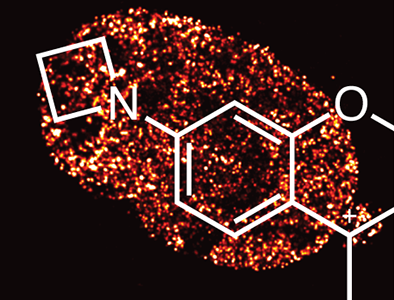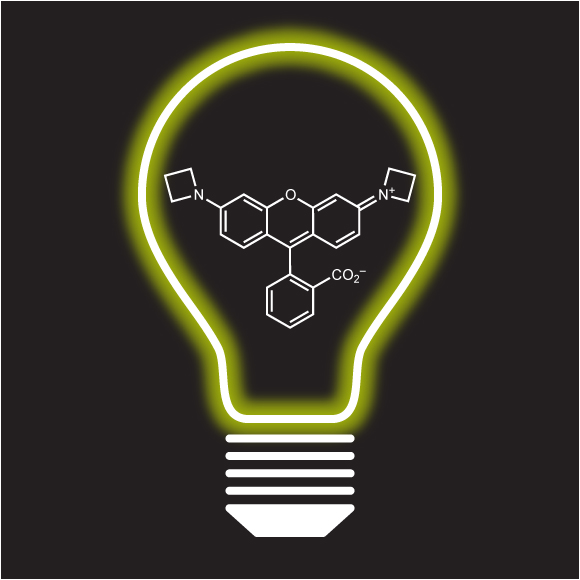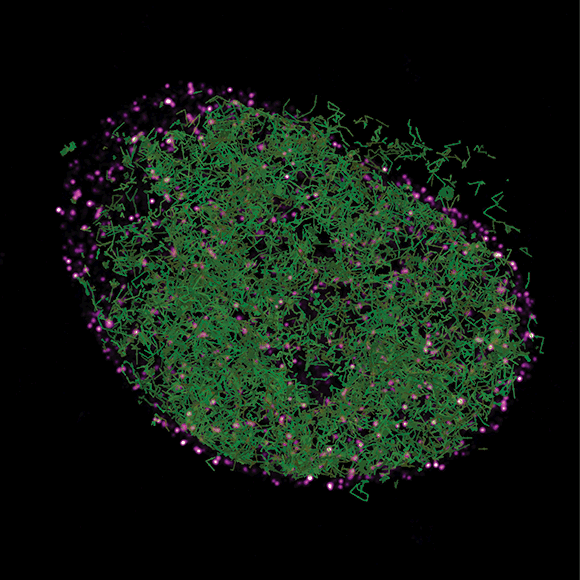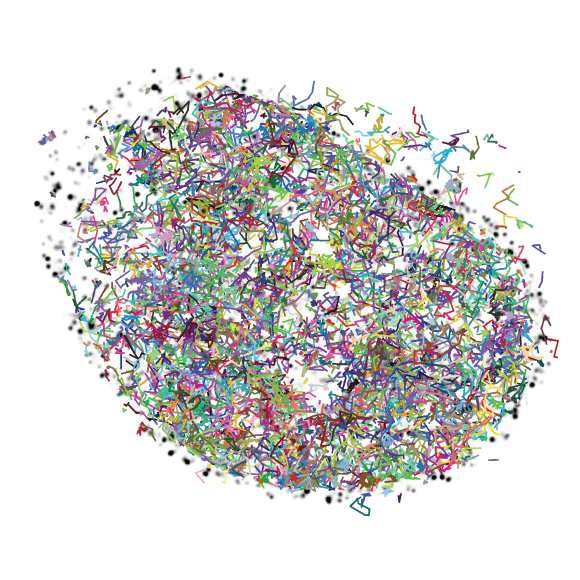The Janelia Fluor® Dyes: Bright and Cell-Permeable Small-Molecule Fluorophores
Novel azetidine-substituted fluorescent dyes
Download our Janelia Fluor® Dye Catalog here.
Overview
The Janelia Fluor® dyes are a next-generation small-molecule fluorophore platform that combines superior brightness, photostability, and cell permeability with unprecedented modularity, allowing fine-tuning of spectral and chemical properties for specific biological applications. Developed using novel azetidine substitution of rhodamine dyes, these fluorophores can be optimized for different biological imaging experiments ranging from super-resolution microscopy to in vivo imaging.
Key Advantages
- High Brightness and Photostability: Substantially brighter and more photostable than classic fluorophores like TAMRA and Cy3.
- Broad Wavelength Range: Covers blue to near-infrared (NIR) excitation for multicolor experiments.
- Tunable Chemical Properties: Chemical substitution allows modulation of the rhodamine lactone–zwitterion equilibrium constant (KL–Z) yielding fluorogenic molecules for “no-wash” imaging and dyes with high bioavailability for use in vivo.
- Plug-and-Play with Existing Labeling Technologies: Small azetidine substituents ensure Janelia Fluor® dyes are compatible with the HaloTag, SNAP-tag, and other labeling strategies.
Spotlight Dyes
- JF549: Our flagship green-excited dye for single-molecule and super-resolution microscopy using HaloTag or SNAP-tag labeling.
- JF646: The standard far-red excited fluorophore ideal for deep imaging with minimal background fluorescence.
Applications
- Single-particle tracking (SPT) in live cells
- Super-resolution imaging (SMLM, SIM, and STED)
- Multiplexed imaging workflows
- Confocal, wide-field, and two-photon microscopy
References: Nat. Methods 2015, 12, 244–250, https://doi.org/10.1038/nmeth.3256; Nat. Methods 2017, 14, 987–994, https://doi.org/10.1038/nmeth.4403; Nat. Methods 2020, 17, 815–821, https://doi.org/10.1038/s41592-020-0909-6; J. Am. Chem. Soc. 2023, 145, 23000–23013, https://doi.org/10.1021/jacs.3c05273.
IP Coverage: Certificate of Trademark Registration, Serial Number 86386733
U.S. Patents 9,933,417, 10,018,624, 10,161,932 and 10,495,632, JP6606096, CN106471067, AU2015240774, DE/FR/GB3126451, CA2944476
Janelia Tech ID: 2014-013
IP Coverage: US Patent Applications 17/116,987 and 18/893,747
Janelia Tech ID: 2020-006




